Giant Hairy Scorpion
- March 26, 2024
- 0 comment
The Giant Hairy Scorpion, scientifically known as Hadrurus arizonensis, is a fascinating arachnid that inhabits the deserts of the southwestern United States and northern Mexico. This formidable creature is among the largest scorpion species found in North America, boasting an imposing size of up to 6 inches in length. What sets the Giant Hairy Scorpion apart is its dense covering of fine hairs, which gives it a distinctive fuzzy appearance. These hairs serve various functions, including sensing vibrations in its environment and aiding in prey detection. Despite its fearsome reputation, the Giant Hairy Scorpion is relatively docile and primarily preys on insects, spiders, and other small arthropods.
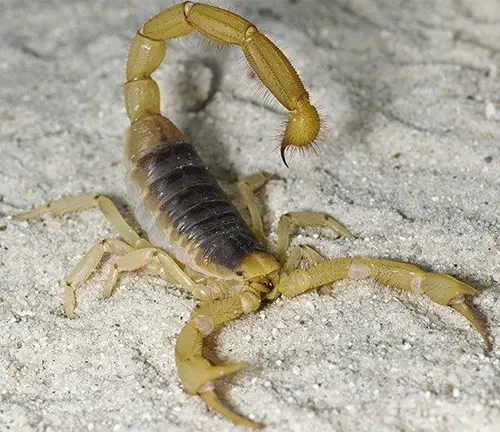
While its venomous sting can cause mild pain and swelling in humans, it is not considered life-threatening unless an individual is allergic. As nocturnal predators, Giant Hairy Scorpions emerge from their burrows at night to hunt for prey, utilizing their keen sense of touch and vibration detection to navigate in darkness. Despite their intimidating appearance, these scorpions play a vital role in their ecosystems by helping to regulate insect populations. However, they face threats from habitat destruction, pesticide use, and climate change, highlighting the importance of conservation efforts to ensure their continued survival in the wild.
Characteristics of Giant Hairy Scorpion
| Aspect | Description |
|---|---|
| Scientific Name | Hadrurus arizonensis |
| Size | Up to 6 inches in length |
| Coloration | Light brown to reddish-brown |
| Habitat | Desert regions of southwestern US, northern Mexico |
| Distribution | Primarily found in arid sandy or gravelly terrain |
| Behavior | Nocturnal predator, primarily feeds on insects and spiders |
| Adaptations | Dense covering of fine hairs for sensory functions, burrowing ability for shelter |
| Venom | Mildly venomous, primarily used for subduing prey |
| Threats | Habitat destruction, pesticide use, climate change |
| Conservation Status | Not currently considered endangered |
Exploring Nature’s Fearsome Arachnids
Scorpions, with their menacing appearance and venomous sting, often evoke fear and fascination. Among them, the Giant Hairy Scorpion stands out for its imposing size and distinctive features. In this article, we delve into the world of these formidable arachnids, exploring their physical characteristics, behavior, ecological importance, and much more.
Physical Characteristics
Size
The Giant Hairy Scorpion is known for its impressive size, making it one of the largest scorpion species in North America. Adults can reach lengths of up to 6 inches, with some individuals even exceeding this size. This substantial length contributes to the scorpion’s formidable presence in its desert habitat, where it is a top predator.
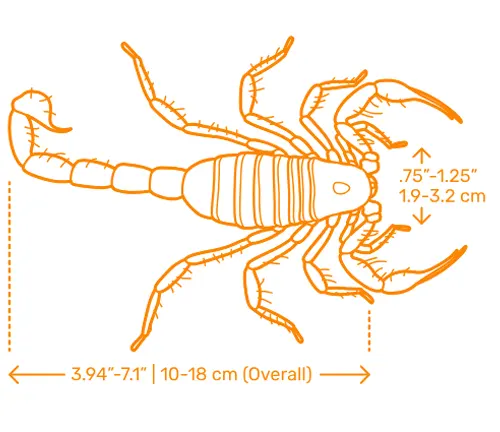
Hairs and Coloration
One of the most distinctive features of the Giant Hairy Scorpion is its dense covering of fine hairs, which gives it a unique fuzzy appearance. These hairs serve various functions, including sensory perception and camouflage. The coloration of the Giant Hairy Scorpion can vary from light brown to reddish-brown, providing effective blending with its sandy desert surroundings. This combination of hairs and coloration allows the scorpion to remain inconspicuous while hunting or seeking shelter in its habitat.

Habitat and Distribution
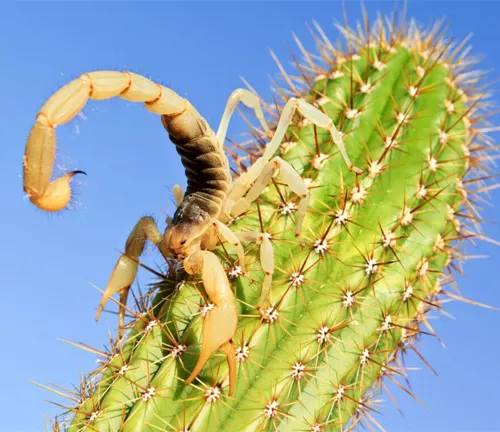
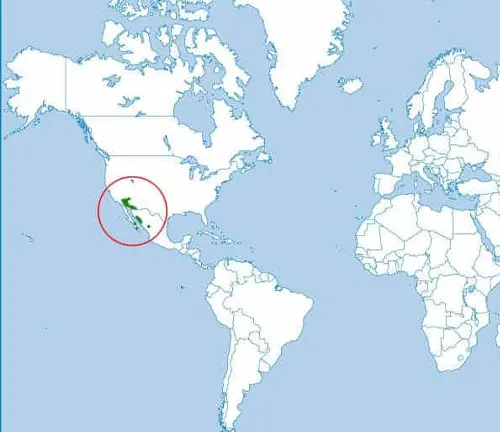
Giant Hairy Scorpions are primarily found in the desert regions of the southwestern United States and northern Mexico. They inhabit arid environments characterized by sandy or gravelly terrain, where they can burrow into the ground to seek shelter from extreme temperatures. These scorpions are well-adapted to the harsh conditions of their habitat, thriving in areas with sparse vegetation and limited water sources. Their distribution spans across states such as Arizona, California, New Mexico, Nevada, Texas, and parts of northern Mexico, where they play a crucial role in desert ecosystems.
Despite their resilience, Giant Hairy Scorpions face threats from habitat destruction and human encroachment, highlighting the importance of conservation efforts to preserve their fragile desert habitats.
Behavior and Diet


Giant Hairy Scorpions are primarily nocturnal creatures, meaning they are most active during the night. Under the cover of darkness, they emerge from their burrows to hunt for prey. Their diet primarily consists of insects, spiders, and other small arthropods found in their desert habitat. Using their keen sense of touch and vibration detection, Giant Hairy Scorpions locate and capture prey using their powerful pincers.
Once caught, they deliver a venomous sting to immobilize their prey before consuming it. Despite their fearsome appearance, Giant Hairy Scorpions are generally docile and will only sting if provoked or threatened. During the day, they seek refuge in their burrows or other secluded areas to avoid the intense heat of the desert sun. This behavior allows them to conserve energy and remain protected from predators while waiting for nightfall to resume their hunting activities.
Reproduction
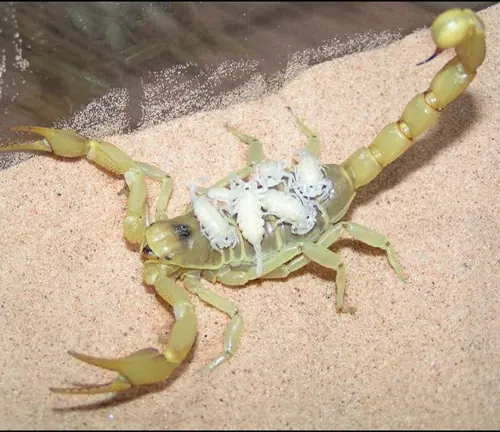

Giant Hairy Scorpions reproduce through a process called sexual reproduction. Mating typically occurs during the warmer months when temperatures are conducive to activity. Male scorpions engage in courtship behaviors to attract females, which may involve intricate rituals such as dancing or vibrating their bodies. Once a suitable mate is found, the male deposits a spermatophore, a packet containing sperm, which the female retrieves using her genital operculum. Fertilization occurs internally, and the female carries the developing embryos inside her body until they are ready to be born. After a gestation period of several months, the female gives birth to live young, known as scorplings.
The number of offspring can vary depending on factors such as the female’s size and health. Once born, the scorplings cling to their mother’s back for protection and may remain there until they undergo their first molt. This maternal care ensures the survival of the offspring during their vulnerable early stages of development. As they grow, the scorplings eventually disperse and establish their own territories, continuing the cycle of reproduction in their desert habitat.
Venom and Predatory Behavior
Giant Hairy Scorpions possess venom glands located in their tail, which they use primarily for subduing prey. While their venom is potent enough to immobilize insects and other small arthropods, it is generally not considered life-threatening to humans unless an individual is allergic. When hunting, Giant Hairy Scorpions rely on their keen sense of touch and vibration detection to locate prey in the darkness of their nocturnal habitat. Once they detect potential prey nearby, they use their large pincers to grasp and immobilize it.
With remarkable precision, they then deliver a quick and accurate sting to inject venom into their prey, effectively paralyzing it. Once the prey is incapacitated, the scorpion proceeds to consume it using its powerful chelicerae (mouthparts). Despite their predatory nature, Giant Hairy Scorpions are not aggressive toward humans and will generally only sting if provoked or threatened. This predatory behavior is essential for their survival in the harsh desert environment, where food sources may be scarce, and competition for resources is fierce.
Adaptations for Survival

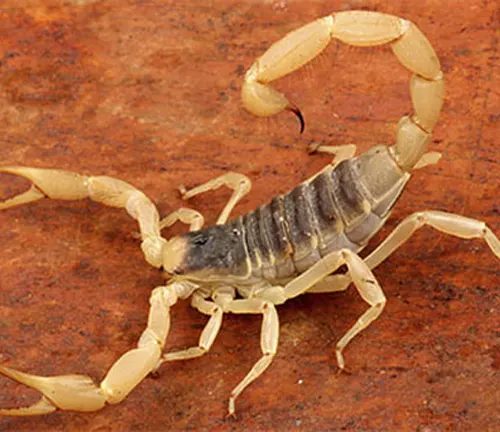
Giant Hairy Scorpions have evolved a range of adaptations that enable them to thrive in their harsh desert habitat. One of their most notable adaptations is their ability to burrow into the ground, allowing them to seek shelter from extreme temperatures and predators. Their strong, robust exoskeleton provides protection against predators and helps minimize water loss in the arid environment. Additionally, their dense covering of fine hairs serves multiple functions, including sensing vibrations in their surroundings, detecting prey, and reducing water loss through evaporation.
This hairy exoskeleton also helps insulate them from temperature fluctuations, maintaining a relatively stable internal environment. Giant Hairy Scorpions are also equipped with powerful chelicerae and venomous stingers, which they use to capture and immobilize prey efficiently. Their nocturnal lifestyle helps them avoid the intense heat of the day, while their keen sense of touch and vibration detection aids in locating food and detecting potential threats. Overall, these adaptations collectively contribute to the survival and success of Giant Hairy Scorpions in their challenging desert habitat.
Interactions with Humans
Currently, Giant Hairy Scorpions are not considered endangered. However, they face threats from habitat destruction, pesticide use, and climate change. Conservation efforts aimed at preserving their desert habitats are essential for ensuring their long-term survival. This includes habitat preservation, monitoring populations, and raising awareness about the importance of protecting these unique creatures.
Conservation Status
Currently, Giant Hairy Scorpions are not considered endangered. However, they face threats from habitat destruction, pesticide use, and climate change. Conservation efforts aimed at preserving their desert habitats are essential for ensuring their long-term survival. This includes habitat preservation, monitoring populations, and raising awareness about the importance of protecting these unique creatures.
Importance in Ecosystem
Giant Hairy Scorpions play a crucial role in their ecosystems as predators, helping to regulate insect populations. By preying on insects and other small arthropods, they contribute to the balance of desert ecosystems. Additionally, they serve as a food source for various predators, further supporting the intricate web of life in their habitat.
Myths and Misconceptions
Scientists continue to study Giant Hairy Scorpions to gain a better understanding of their biology, behavior, and ecological significance. Research efforts focus on topics such as venom composition, reproductive strategies, and habitat requirements. By conducting research and studying these fascinating creatures, scientists can contribute valuable insights to conservation and management efforts.
Research and Study
Scientists continue to study Giant Hairy Scorpions to gain a better understanding of their biology, behavior, and ecological significance. Research efforts focus on topics such as venom composition, reproductive strategies, and habitat requirements, providing valuable insights into these enigmatic arachnids.
Future Threats and Concerns
Despite their resilience, Giant Hairy Scorpions face numerous threats and concerns for the future. Habitat destruction due to urbanization, agriculture, and other human activities poses a significant risk to their survival. Additionally, pesticide use and climate change further exacerbate these threats, potentially impacting their populations. Addressing these future threats and concerns through conservation initiatives and sustainable management practices is crucial for ensuring the continued existence of Giant Hairy Scorpions in the wild.
Different Species
Hadrurus arizonensis
Also known as the Arizona Giant Hairy Scorpion, this species is found primarily in the desert regions of Arizona, as well as parts of California, New Mexico, and Utah. It is one of the largest scorpions in North America, known for its impressive size and dense covering of fine hairs.
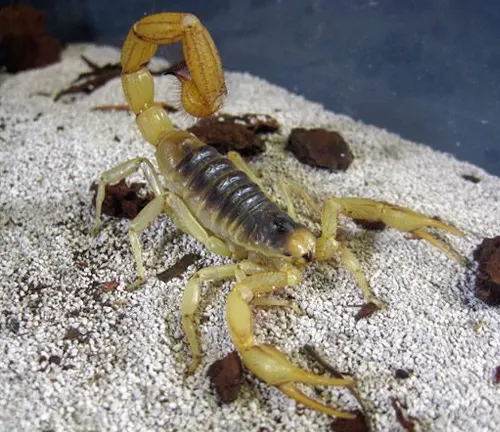
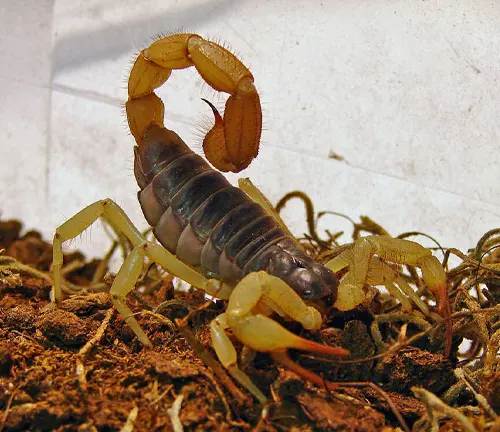
Hadrurus spadix
Commonly referred to as the Giant Desert Hairy Scorpion, this species inhabits the deserts of the southwestern United States and northern Mexico. It shares similar characteristics with H. arizonensis, including its large size and hairy appearance.
Hadrurus obscurus
The Dark Desert Hairy Scorpion is another species within the Hadrurus genus. It is found in the desert regions of Arizona, California, and Nevada, where it burrows into sandy or gravelly soil.
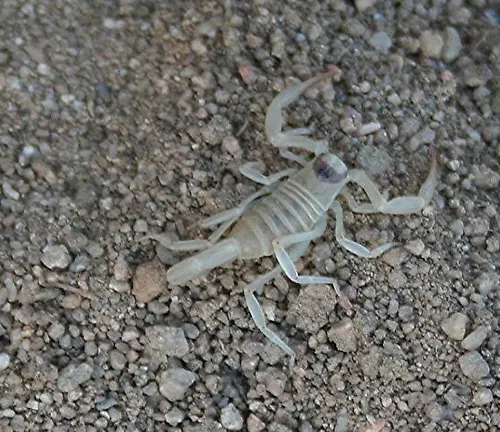
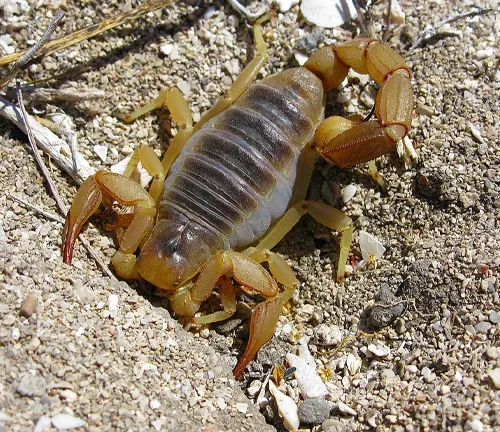
Hadrurus concolor
This species, known as the Giant Black Hairy Scorpion, is found in the Sonoran Desert of Arizona and Mexico. It is characterized by its dark coloration and robust size, making it a formidable predator in its habitat.
Hadrurus pallidus
The Pallid Desert Hairy Scorpion inhabits the desert regions of California and Baja California. It is distinguished by its pale coloration and relatively large pincers compared to other species within the genus.

Frequently Asked Questions (FAQs)
- How venomous are Giant Hairy Scorpions?
While Giant Hairy Scorpions possess venom to subdue their prey, their sting is not considered life-threatening to humans unless an individual is allergic. Most stings result in mild pain and swelling. - What should I do if I encounter a Giant Hairy Scorpion in the wild?
If you encounter a Giant Hairy Scorpion in its natural habitat, it’s best to observe from a safe distance and avoid provoking or handling it. These scorpions are generally not aggressive unless threatened. - Do Giant Hairy Scorpions have any natural predators?
While adult Giant Hairy Scorpions have few natural predators, they may be preyed upon by larger mammals, birds of prey, and other predatory arthropods. However, their burrowing behavior helps protect them from many potential predators. - How do Giant Hairy Scorpions reproduce?
Giant Hairy Scorpions reproduce sexually, with mating typically occurring during the warmer months. Females give birth to live young after a gestation period of several months, and the newborn scorpions, known as scorplings, are initially carried on the mother’s back. - What is the role of Giant Hairy Scorpions in their ecosystems?
Giant Hairy Scorpions play a crucial role in controlling insect populations, contributing to the balance of desert ecosystems. They also serve as prey for various predators, helping to support the food web. - How can I identify a Giant Hairy Scorpion from other scorpion species?
Giant Hairy Scorpions can be identified by their large size, dense covering of fine hairs, and characteristic coloration, which ranges from light brown to reddish-brown. Their robust appearance and elongated bodies also distinguish them from other scorpion species. - Are there any myths or legends associated with Giant Hairy Scorpions?
Throughout history, scorpions have been the subject of numerous myths and misconceptions, often portrayed as symbols of danger and malevolence. While some cultures may have myths or superstitions related to scorpions, these beliefs are not based on scientific fact. - What is the lifespan of a Giant Hairy Scorpion?
In the wild, Giant Hairy Scorpions can live for several years, with females typically living longer than males. Factors such as environmental conditions and availability of food can influence their lifespan. - Are Giant Hairy Scorpions territorial?
Giant Hairy Scorpions are not highly territorial but may establish burrows and territories for hunting and shelter. They may defend their burrows from other scorpions or predators if threatened. - Can Giant Hairy Scorpions survive in captivity?
While some people may attempt to keep Giant Hairy Scorpions as pets, they have specific habitat requirements and are not well-suited to captivity. Captive individuals require a properly maintained terrarium with suitable substrate, temperature, and humidity levels to thrive.






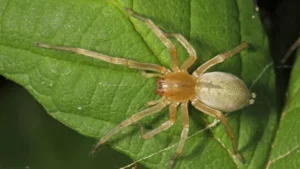

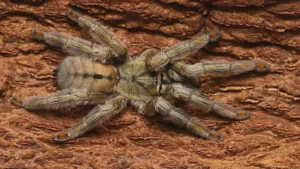
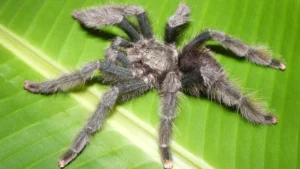
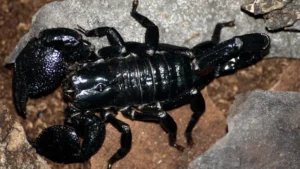
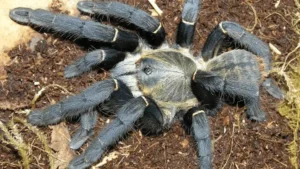

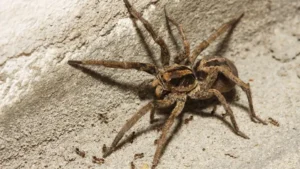
Leave your comment